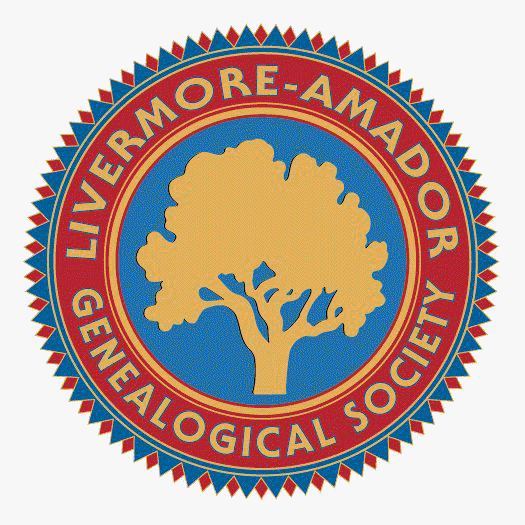 |
The Livermore Roots Tracer Volume XX Number 3 August 2000 Editors: Vicki Renz and Debbie Pizzato |
 |
The Livermore Roots Tracer Volume XX Number 3 August 2000 Editors: Vicki Renz and Debbie Pizzato |
The Roots Tracer is a quarterly publication with articles of interest to the genealogist. Members are encouraged to submit their "Profiles" and articles of general interest. Queries are free. The Roots Tracer is published in February, May, August and November. The deadline for each quarterly is the 15th of the previous month. Submissions must contain the name of the submitter, as well as the name of the author, publication and date of any published article that is being quoted. Send material to: The Roots Tracer, P. O. Box 901, Livermore, CA 94551-0901 or E-mail: rootstracer@l-ags.org
Table of Contents
Van & Phyllis Gilbert |
Delores Olness |
Mark & Linda Libby |
We have 177 memberships :
|
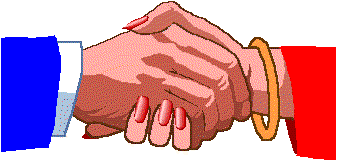 |
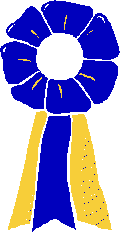 |
Award for One of Our Members |
From the CSGA Newsletter, vol. 18, No. 8 (August 2000) under CSGA News.
This month we begin with a partial listing of the awards presented at the June 20th
CSGA annual meeting in Fresno. There were a total of 61 nominations! The abilities and
dedication of the nominees is most impressive. Unfortunately, space limitations prohibit
listing all the reasons these people were selected to be recipients of the awards.
Regional Director's Award:
Presented to an individual or organization on the recommendation of a regional director in recognition of exceptional contributions to the field of genealogy and family history. The nominee must have made an extra-mile effort to promote goodwill and improve services, and must be a member of CSGA.
Jolene Abrahams – L-AGS – has been actively involved in a variety of ways, as president, teaching beginning genealogy, implementing a Study Group for general discussion. She has given numerous workshops on adoption and has served as Co-Secretary for CSGA.
Congratulations, Jolene. We owe the existence of our group to you, as L-AGS grew out of one of your Beginning Genealogy classes in 1977! All of us have benefited from your efforts in genealogy.
 |
President’s
Message From Jon Bryan |
Our "L-AGS experiment" at Alameda County Fair 2000 appears to be a resounding success. Thank you to all our volunteer genealogy docents: Pamela Boggs, Dick Finn, Frank Geasa, Stan and Kaye Strickland, Leo Vongottfried, Isabel Nolte, Bill Farrand, George and Harriet Anderson, Dolores Oldness, Martha Wesnel, David Oakley and Gail and Jon Bryan. We couldn’t have done it without you. This year we supplied genealogy docents for 5 of the 17 fair days (Thursdays and Saturdays). Mary Dillon volunteered for one Sunday afternoon, so we actually had L-AGS docents there on 6 of the 17 days.
If we do this genealogy booth again, we want to improve it. We would appreciate suggestions from everyone. Give your ideas to a board member or someone who worked at the booth.
To better measure our success at the fair, we will need to look at our membership pattern in the next year. Also, I wonder if George Anderson sees more and different visitors while he is docent at the Pleasanton Library on Wednesdays between 10 a.m. and 1 p.m. We may not see much effect until we have done our fair experiment a few more times. With the recent "road-blocks" to having our L-AGS seminars, this fair experiment may turn out to be a good temporary substitute. If we can bring the seminars back, the genealogy seminar and the fair booth should complement each other.
Our goal was to supply every L-AGS volunteer docent with a free parking and fair entry pass for the day or days they volunteered. If the volunteers planned their visits with some extra time, they could add a free visit to parts of the fair and free evening entertainment. Gail and I received similar free benefits by volunteering for 2 hours as gardening docents at the Garden Club Booth!
Mary Dillon borrowed a tombstone for our fair display from Barbara Bunshah and the Livermore Heritage Guild. Barbara also provided us with obituaries from both the Livermore Herald and Livermore Echo for Antone Rufet and Antone Ruffet! The tombstone showed Antoine Rufet (1853 - 1914). One obituary said he was age 60 and the other said 61. One said he had one brother named Frank and the other said John. Both obituaries made it sound as if Antoine had died several days before his body was discovered. I suspect that we may not know for certain which day he died! About all I can say with confidence is that "only some of this information may be correct" in those obituaries. It turned out to be an excellent example of how we genealogists often wind up with so many puzzles.
Since pictures are supposed to be "worth a thousand words," please check out the Fair photos at our web site by clicking on "L-AGS Photos" and selecting a link to the name of a photo.
Next time, if we have more bulletin board room, we should add both maps of California and Alameda County for our "Birthplace Survey." This year we had only World and USA maps. Regions around San Francisco, Oakland and San Jose appear to be almost solid with pushpins!
Our plan is to put the contest entry information on an Excel worksheet and use random numbers to draw the names of our winners. We have four prizes of membership in L-AGS plus 4 hours of research assistance at the Pleasanton Library. We plan to "force" the last winner to be from our Livermore-Amador area. We will also have prizes of the Family Tree Maker software (version 7.0). If our schedule permits, we will include the names of our winners in the Roots Tracer.
I am pleased to report a positive response to the "Guest book" at our web site. Thank you Vicki Renz, Larry Renslow, Doug Mumma and George Anderson for providing this new capability for L-AGS. When I checked recently, I found postings there from Doylwstown [Doylestown?], OH; Helena, MT; Markham, VA; Columbus, OH; Pittsboro, NC: Pleasanton, CA and Livermore, CA. It should be fascinating to watch these responses grow in the future. This caused me to wonder which country will be the home of our first foreign guest?
One visitor at the fair said that they live too far away so they could not interact easily with L-AGS. When I learned they were on the Internet; my reply was that they could post genealogical queries in our Guest book! The Internet really makes L-AGS reach "worldwide."
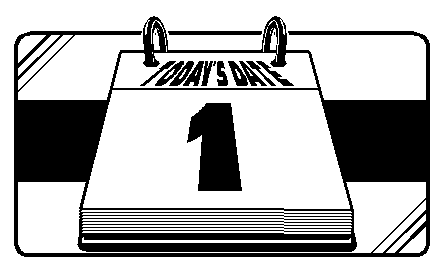 |
Calendar of Meetings |
Livermore-Amador Genealogical Society has the following monthly meetings:
Family Tree Maker Focus Group: 1st Thursday, 7:30 p.m., at Livermore Adult Education Building, 543 Sonoma Avenue, Livermore. During the summer, meetings are held at the LDS Church, 950 Mocho Street, Livermore. For information e-mail computer@l-ags.org.
General Meeting: 2nd Tuesday (except July), 7:30 p.m., at Congregation Beth Emek, corner of College Avenue & South M Street, Livermore. For information e-mail program@l-ags.org.
Study Group: 3rd Thursday, 7:30 p.m., at the LDS Church, 950 Mocho Street, Livermore. For information e-mail study@l-ags.org.
Computer Interest Group: 4th Thursday (except November and December), 7:30 p.m. at Livermore Adult Education Building, 543 Sonoma Avenue, Livermore. During the summer, meetings are held at the LDS Church, 950 Mocho Street, Livermore. For information e-mail computer@l-ags.org.
Other Area Genealogy Societies General Meetings
Contra Costa County Genealogical Society:
2nd Thursday of each month, 7:30 p.m. in the Community Room of the new Concord Police Station, 1350 Galindo Avenue, Concord.
East Bay Genealogical Society:
2nd Wednesday of each month, 10 a.m. at the Dimond Branch of the Oakland Library, 3565 Fruitvale Avenue, Oakland. This location is subject to change.
Hayward Area Genealogical Society:
4th Tuesday of each month, 6:30 p.m. in the San Lorenzo Library, 395 Paseo Grande, San Lorenzo.
Mt. Diablo Genealogical Society:
3rd Thursday of each month, 1 to 3 p.m. in the Community Room, CivicBank of Commerce, 1940 Tice Valley Road, Walnut Creek.
San Joaquin Genealogical Society:
3rd Thursday of each month at 1:00 or 7:00 p.m. at Brookside LDS Church, 800 West Brookside Road, Stockton.
San Mateo County Genealogical Society:
3rd Tuesday of each month, 7:30 p.m. in the Belmont Central School, 525 Middle Road, Belmont.
San Ramon Valley Genealogical Society:
3rd Tuesday of each month (except August and December), 10 a.m. at LDS Danville Stake Center, Stone Valley Road at Smith Road, Alamo.
Santa Clara County Historical and Genealogical Society:
3rd Thursday of each month, at 7:00 p.m. (except August and December) in the community room of the Santa Clara City Library, 2635 Homestead Road, Santa Clara.
Solano County Genealogical Society:
4th Thursday of each month (except July, August, November and December) at 7:00 p.m. in the Fairfield Senior Center, 1200 Civic Center Drive, Fairfield.
Sonoma County Genealogical Society:
4th Saturday of each month at 1 p.m. (except July, August, and December) in Room 2009, Lark Hall, Santa Rosa Junior College, Santa Rosa.
Stanislaus County Genealogical Society:
3rd Thursday of each month (except July and December) at Trinity Presbyterian Church, Covell hall, 1600 Carver Road, Modesto.
Tracy Area Genealogical Society:
4th Thursday of each month at 7:00 p.m. at the Lolly Hansen Senior Center, 375 9th Street, Tracy.
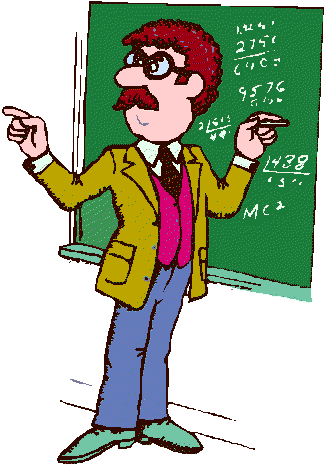 |
Upcoming Seminars and Workshops |
September 6 – 9, Salt Lake City, Utah – Federation of Genealogical Societies Annual Conference, "A World of Records," hosted by the Utah Genealogical Association. Salt Palace Convention Center. For information write FGS Business Office, P.O. Box 200940, Austin, TX 78720-0940; call FGS toll-free 888-FGS-1500, 512-336-2732, Fax 512 336-2732, e-mail fgs-office@fgs.org
September 16 – 17, San Diego, CA -- San Diego Genealogical Society "Genealogical and Family History Fair," Scottish Rites Center, For information, see the web site.
September 22 - 24, Federation of East European Family History Societies (FEEFHS) - Sixth Annual Convention at the Best Western Salt Lake Plaza Hotel. For information, write: FEEFHS 2000 Convention, P.O. Box 510898, Salt Lake City, UT 84151-0898 or see the web site.
September 23 - Contra Costa County Genealogical Society presents an all-day seminar, "Getting Started in Genealogy" at the Kensington Community Center, 59 Arlington Avenue, Kensington. Presenters include Barbara Edkin, Susan Swinell, Bette Kot, and Cat Nielsen. Lunch will be included. $20 - members; $25 - non-members.
September 23 – Placer County Genealogical Society will celebrate its 20th Anniversary with an all day seminar.
October 6 – 9, Austin TX - POINTS National Conference 2000, [Italian-American] Austin Doubletree Hotel, North. Contact The PNC – 2000 Organizing Committee, 10401 Misty Hollow Cove, Austin, TX 78759 for registration material; Austin Doubletree Hotel North 1-512-5453737 for room reservations.
October 21 – San Mateo, CA – San Mateo County Genealogical Society Fall Seminar with Wendy Elliot, 9:00 a.m. to 4:00 p.m. For information, contact Marypask42@aol.com or check the web site.
October 27 – 28 Tempe, AZ – Family History Society of Arizona Annual Seminar. Guest speaker Kelle Blake, Director, National Archives, Mid-Atlantic Region. Seminar will be held at Arizona State University Memorial Union. Details on the web site.
October 23 – Olathe, KS – Johnson County Genealogical Society Fall Conference. Myra Vanderpool Gormley is the keynote speaker. Contact JCGS, P.O. Box 12666, Shawnee Mission, KS 66382-2666 for details.
October 27 – 28, Decatur, Illinois – "Preserve the Past, Enrich the Future," is the theme of the conference of the Illinois State Genealogical Society. A wide variety of topics will be included along with vendors and society displays. Contact ISGS, P.O. Box 10195, Springfield, IL, 62791-0195; or call 217-789-1968.
November 4 – Livonia, Michigan – Ryan Tayor, Steve Myers, and Harley Barnette are the presenters for "Putting it in Print: Writing and Publishing Your Family History." Contact the Western Wayne County Genealogical Society, Delphine Goodwin, 29578 Westfield, Livonia, MI 48150 for details.
November 6 – Rocky River, Ohio -- Sandra Malitz and Elissa Scalise Powell will conduct "Researching Immigrant Ancestors Seminar: Finding the Ship, the Passenger List and more!" The Cuyahoga County Council of Genealogical Organizations sponsors the event.
2001 January 8 – 12, Salt Lake City, Utah – The sixth annual Salt Lake Institute of Genealogy will offer ten different courses, each with at least twenty hours of instruction. Classes will include assignments geared to student research needs with feedback on their applied research. E-mail info@infouga.org or visit the Utah Genealogical Society web site.February 2 - 3 Dallas, Texas – GENTECH 2001 will present a variety of speakers whose topics will blend technology and traditional research methods. The theme is Union and Reunion. Visit their web site for information.
 |
In Search of George Edwards, Nevada County, CA – Gold Country By Linda Trudeau |
My search for George Edwards, my g-g-grandfather, began last summer, July 1999. My husband and I had managed to get a few days off together and travel to Nevada City, CA, in search of George. We’d checked into our motel and had dinner, when a family emergency called us home immediately. That aborted trip set the stage for last month’s adventure in Nevada City, once again. All year I’d done some bits and pieces research of this family, much of it in San Francisco. It seems George’s wife and children all ended up in the City by the Bay, about 1888, with no sign of George. I had to satisfy myself with one-day visits to the SF Public library, microfilmed newspapers, public records, and cemetery visits to Colma. Oh, how I was dying to get to the heart of things in Nevada County, CA.
Finally, at the end of June 2000, our days off matched up, our children were out of town for a week, and a trip was hastily planned. Pulled out the binder on George’s family, read and reread all I knew so far, checked the web sites for Nevada County Genealogy, and took off, ready for a whirlwind trip.
The fact that my husband accompanied me is a story in itself: he’s not a genealogist by any means, and listens patiently (most of the time) when I tell him of my latest find. He’s been known to visit cemeteries, if I pester him enough, but a full-fledged research trip with recorders offices and libraries would be a first. We were off, reservations at the Deer Creek Inn, a bed and breakfast, in Nevada City. Somewhere along the line I’d neglected to tell my husband, Scott (AKA Good Sport), this wasn’t the Holiday Inn! The home was a lovely Victorian, c. 1860. Once he got over the shock, we settled in comfortably. The innkeeper told us, "Breakfast at 9a.m. Don’t be late." I was already planning my day for research, allowing 10 minutes to eat breakfast. We sat down to a four course meal, scrumptious food, and good company, for the next 1½ hours. What a delightful surprise it was indeed.
Off to find Nevada County Recorder’s office on Maidu Road. Well, I bet you know where this is going. We looked it up on the map, drove down Highway 49 a bit, a few side roads, and found only Maidu Lane. We were in the boonies far from town, NO county building in sight. Not a good start for the Good Sport husband. He was looking at me a bit sideways, then out comes the cell phone, for instant directions. Back down the Highway to Maidu Road, which, by the way, isn’t on the map!
Good Sport isn’t sure of this idea, as the Courthouse is right here, we’re in our summer research attire and he feels a bit odd. Doesn’t help that his occupation is a police sergeant, so he’s looking at the bad guys in the building while I head for the clerk’s office. Scott learned about checking birth, death and marriage indexes in a quick lesson. All I knew about George: born 1828 Denmark; Nevada County Census 1870, 1880. Nothing else. Based on the information I had about the wife being in San Francisco 1888, I surmised he died between 1880-1888. A good start. Nothing about George or the family in the basic records.
Since the Foley History Library didn’t open until 1 p.m., we killed some time at the main library conveniently across the parking lot from the recorder’s office. Once again, quick lesson for Scott on reading biographies of the who’s who in the county, and all the town names we’d brought with us. Five dollars worth of copies later we were off to Foley Library. The volunteer, Maria Brower, was expecting us, as I’d e-mailed a few days earlier. It is a Carnegie Library, and one of the most organized and beautiful examples of a history library I’ve ever seen. Maria asked what our time frame was, and immediately started pulling indexes and books from the shelves, piling them on the table. When is the last time anyone’s done that for a researcher?
IMMEDIATE SUCCESS goes a long way when an amateur is along for the ride. The first book, a gazetteer of the county, 1880, has a biography of George Edwards! Born 1828, Denmark; went to sea in 1842; followed the sea 6 years; went to New York in 1848; followed the sea 3 more years Travels to California, Butte County; then Sierra County; settling later in Nevada County. Began in the hydraulic mining industry as a canvas hose maker; then into the hotel business, ending up in North Bloomfield. He married Miss Mary O’Connor in 1862, had 3 sons and 3 daughters. This was the roadmap to my research neatly before me! Great Register provided two voter registration dates, Naturalization dates, and penciled in red across the last entry, "dead." This was a good clue he’d died in the county. A cemetery index of North Bloomfield, there is George!! Died July 30, 1885. Again success, Scott is thinking, this isn’t that hard!! Microfilms of the newspapers for obituaries, article on a hotel fire and we were spinning. Probate film, and more copies. More books, I was so thrilled. Before we knew it, 4 p.m., closing time. With maps a plenty and promises to return the next day, we were off again.
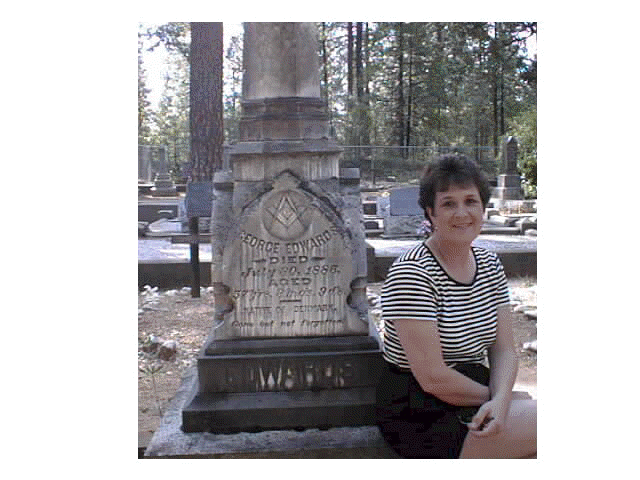 I’d already learned that
North Bloomfield is preserved within the Malakoff Diggins State Park, a mere 15 miles
away. Well, that’s as the crow flies. Still high with our instant success, we’re
off, ice chest is empty, we say it won’t take long and off we go. Winding mountain
roads, cross the Yuba River, backwoods country, then unpaved gravel road for 5 miles, and
we find the PARK. Hydraulic mining left the mountains there looking like Yellowstone or
the Grand Canyon, an overwhelming sight. But this isn’t what I really came to see:
Where, oh, where is the cemetery? We found it down the road, easily accessed and CLEAN. A
private little town cemetery, it was lovely. No one around for miles, we parked next to
the cyclone fence, map in hand, looked up and there was GEORGE, his grave not 2 feet on
the other side of the fence. I nearly pinched myself; how lucky could we get!! It is the
largest monument in the grounds, and easy to read and photograph. I visited a bit with
George, walked down to the little school where his children attended, and across the road
to the Catholic Church. Back to the car for a short drive to the center of town. Now
we’re at 6 p.m., park is closed, no food, no water, but still excited. The town has
many preserved buildings, and all are named and marked.
I’d already learned that
North Bloomfield is preserved within the Malakoff Diggins State Park, a mere 15 miles
away. Well, that’s as the crow flies. Still high with our instant success, we’re
off, ice chest is empty, we say it won’t take long and off we go. Winding mountain
roads, cross the Yuba River, backwoods country, then unpaved gravel road for 5 miles, and
we find the PARK. Hydraulic mining left the mountains there looking like Yellowstone or
the Grand Canyon, an overwhelming sight. But this isn’t what I really came to see:
Where, oh, where is the cemetery? We found it down the road, easily accessed and CLEAN. A
private little town cemetery, it was lovely. No one around for miles, we parked next to
the cyclone fence, map in hand, looked up and there was GEORGE, his grave not 2 feet on
the other side of the fence. I nearly pinched myself; how lucky could we get!! It is the
largest monument in the grounds, and easy to read and photograph. I visited a bit with
George, walked down to the little school where his children attended, and across the road
to the Catholic Church. Back to the car for a short drive to the center of town. Now
we’re at 6 p.m., park is closed, no food, no water, but still excited. The town has
many preserved buildings, and all are named and marked.
George owned the Grand Central Hotel, on later maps, known as the Edwards Hotel. We parked in front of the museum, and out comes the park ranger. "May I help you folks?" "We’re looking for the Grand Central," I said. He pointed across the street to an empty lot with a sign. Very nice. Then he asked if we’d like to come in the museum, he’s still on the clock; we can step right in!! He showed us photos, maps and exhibits, pointed out interesting facts of the place. While Scott and the ranger were talking, I wandered over to an exhibit case, full of memorabilia, and glanced at a postmaster’s log. The hair on my neck stood up (happened several times that day) – the very first entry at the top of the page, Mrs. George Edwards, mailed a package to San Francisco, June 12, 1887. I let out a squeal of delight and Scott came to look. We checked again – four more entries on the 2 open pages. At that time, the town had a population of 1000 people. So here I am, 113 years later, seeing her name in a museum exhibit case. Would the excitement ever stop? The ranger opened the case, took out the book and let me photograph the pages.
After an hour we left, and walked the town. No one around, we looked in the windows of their general store, postmaster’s office, drug store, and blacksmith shop. We walked the site of George’s hotel; wondered where their friends lived; was it this hot in 1887; how did they keep cool? What a wonderful walk we had. I needed to call my mother; after all, this was her g-grandfather’s town. When I went around the corner, a payphone appeared magically. "Mom, Mom I found George! I am here in his town!" We’d asked the ranger if there was another way out, he laughed and said, "you must have taken the short way?" A paved road 3 miles longer, yet much shorter driving awaited us around the bend. A stop for food and drink in Nevada City, and back to the Deer Creek Inn. The Inn sits on the creek; so we took our stash of papers and sat and enjoyed the evening and the creek. Scott said this was one of the most exciting days he’d ever had, commenting that when we started, George was a ‘nobody,’ and at the end of the day, we knew where he was, had his real estate and mining transactions, voter records, and much more. He also said genealogy is a lot like police work – The dead always have something to say; someone just has to be there to listen.
We left Nevada City 2 days later, more research and some shopping along the way. As we left, I looked again at the Deer Creek Inn, and its sign, c. 1860, took on new meaning. Had George and his family been to this home, walked by when in Nevada City on business, I wonder? A wonderful trip, and such a success with my Good Sport along. Serendipity was with us this time, good luck all around, but I did have to tell him research doesn’t always fall in your lap like that, we were truly lucky that day. There is more to find about George, which will now await another trip; Nevada City isn’t that far away.
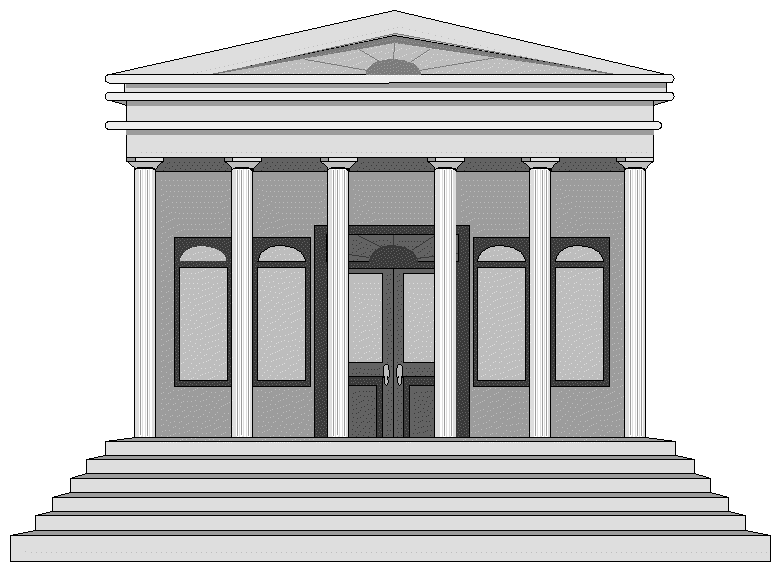 |
Museums and Genealogy Harriet and George Anderson |
We recently returned from a short visit to Minnesota and Iowa. In addition to attending a family reunion and a belated memorial service for an elderly aunt, we met some cousins for the first time, prowled some cemeteries and visited some archives. Nothing newsworthy there. What may be worth mentioning is our visit to two ethnic museums: The Danish Immigrant Museum in Elk Horn, Iowa, and The Vesterheim Norwegian-American Museum in Decorah, Iowa. Both are well-funded, moving tributes to pioneers from those two Scandinavian countries. This was not our first visit to Vesterheim - we have been members for 20 years - but it was the first time in Elk Horn. Solvang in California is a Danish town in a tourist sense, but it lacks the authentic exhibits, with annotation by scholars, that Elk Horn has. Poulsby in Washington state has the same analogy with Decorah. Both Elk Horn and Vesterheim have large genealogy collections.
We like museums, especially those devoted to the daily life of ordinary people, like
our ancestors. Even more especially, we like "living" museums where docents
dressed in period costumes reenact that daily life. We can’t pass them up.
Williamsburg, Virginia, is the premier US example. Others we recommend are Sutter’s
Fort in Sacramento, California; California missions on docent days; The Living Farm in Des
Moines, Iowa; Boonesboro, Kentucky; the Lincoln Trail in Kentucky, Indiana and Illinois;
Pleasant Hill Shaker Village in Kentucky; Cade’s Cove in Great
Smoky Mountain National Park in Tennessee; Maihaugen in Lillehammer, Norway; Sogn
Folkemuseum at Kaupanger, Norway; the Open Air Museum in Arnhem, The Netherlands. A
memorable one is the stone age living museum in Mid-Jutland, Denmark: it is so authentic
that the women docents wear topless animal skins.
There is a saying that you can’t appreciate genealogy until you study the geography and history of your ancestral homes. The best way to appreciate the history, we believe, is to experience it at a living museum.
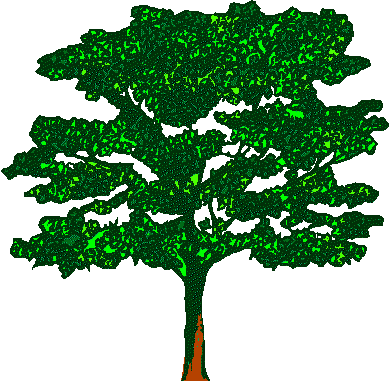 |
Jacob Grosjean (Another Questionable Ancestor) By Mildred Kirkwood |
Jacob Grosjean and his brother Jeremiah, born in France, came to America in 1750. In 1764, Jacob married Maria Magdalena Kistler and Jeremiah married Maria Magdalena Kroh. (Fran Sammons, former L-AGS member, was descended from Jeremiah). Jacob was also known as "French Jacob," and seems to have been quite a character.
He settled on land in Millersburg, Pennsylvania, near the Susquehana River, where he had a gristmill. The other inhabitants saw him as having supernatural powers. It was said that he could charm rattlesnakes, make an attacking animal halt in its tracks, cure ailments by the mere recitation of words, blow out the fire from burns and scalds, and stop the flow of blood. When small boys angered him, he transformed them into cats or dogs. Even the witches were afraid to tangle with him! He supposedly had a silver mine, guarded by a spell that only Jacob could open and only at certain phases of the moon. He would go to the mine, utter a magic word, take out some silver, utter another magic word and the mine would close. One day, there was a forest fire. Jacob made a hex sign on a log, and sat down on it to smoke his pipe. He said, "Here it will stop." And it did! One evening, he was fired upon by a band of Indians. The next morning, he tracked them down. He made himself invisible, and killed four of them. The Indians, seeing no enemy in sight, fled in panic.
Jacob moved to Kentucky, where he is shown on the 1790 census. In 1799, he moved to St. Charles, Missouri and built another mill. Every time that Jacob moved, Jeremiah moved with him, and so did the Kroh and Kistler families. In those days, you settled on the land and improved on it, and after a certain period of time, a Board reviewed your possession of the land and, if approved, the land belonged to you. On the same day, Jacob and Jeremiah, along with a neighbor, Daniel Boone, went before the Board. Boone’s claim was approved, but Jacob’s and Jeremiah’s were denied. They were both accused of fraud, the Board suspecting that they had antedated their possession of the land. Jacob got mad, went home and took his mill apart, loaded it on a wagon and moved to another county!
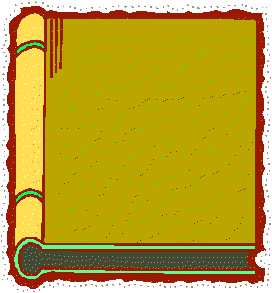 |
Livermore Valley History By Gary Drummond |
Editor’s Note: Gary Drummond has long been a student of Livermore Valley History. He is the author and editor of several publications on valley history, including the stories of Mary Ann Harlan Smith, William Mendenhall and James D. Smith, Headmaster of Livermore College from 1875 to 1893. He is on the Board of Directors of the Livermore Heritage Guild
The First Churches in Livermore
Earlier articles in the Tracer have outlined the rise of various secular institutions in Livermore, but we have yet to discuss early spiritual support in the community. Here are two examples.
First Presbyterian Church
The earliest acknowledged Protestant religious services in Livermore Valley were held in the schoolhouse located somewhere near the intersection of Portola and Murrieta Boulevard intersection beginning in 1866. At first, a Presbyterian minister met with worshipers once monthly. By 1867 a Methodist brother included Livermore in his circuit, and until 1871, the Presbyterians and Methodists alternated religious services.
The Presbyterian Church was formally organized here in February 1871. For the first year, members continued to meet in the schoolhouse, but by May 1872 they were meeting at the Livermore Collegiate Institute on College Avenue. Church services soon moved to a more central location in town, the second floor of Bank Exchange Hall, then located on First Street a short distance east of Livermore Avenue. The minister remembered how"… often mingling with the sounds of praise came curses and clink of glasses from the saloon below. Sometimes a half-drunk reveler would stagger up the stairway to see from whence came the unmuted echoes of prayer and hallowed song."
In December 1873, the Presbyterians commenced construction of a permanent sanctuary seating 250 people and at a cost of $2000. Construction was interrupted by a windstorm on January 15 1874 that flattened the framing. The builders started again. The structure still stands at the corner of Fourth and K Streets, although much changed from its original appearance.
St. Michael’s Catholic Church
From 1872 until 1877, the pastoral care of local Catholics was under a mission, first from San Leandro and later from Mission San Jose. The locals constructed a 25-ft. x 50-ft. building in 1872 on property donated to the church by the Alphonso Ladd estate. It was used only when the priest could arrange to visit Livermore.
The first permanent priest was assigned to Livermore in the summer of 1878, and was replaced nine months later by a pastor who served the parish for the next 38 years. At first, as there was no parish house until 1881, the priest lived with a local family. It was evident with the increasing immigration of Catholic families into the Livermore area that a proper sanctuary was necessary. As early as 1880, St. Michael ‘s parishioners held bazaars and fairs as fundraisers. It took ten years to raise enough capital to start construction. On March 17 1891 the new church was dedicated. It was a magnificent wooden Gothic structure. The interior was 56 ft. x 108 ft. and could seat 500 people. The roof rose to a peak of 70 ft., and the nave was 52 ft. high, from which were suspended two large crystal chandeliers, each having 32 gas lights. The bell tower reached 148 ft. in the air, and it was said the golden cross atop it could be seen from Mt. Diablo.
It was a windy day on August 4, 1916 when St. Michael’s Church burned. The exact cause is still unknown. It is said that a fire broke out in a planing mill west of the church. Burning shingles were carried by the wind toward St. Michael’s and caught the roof on fire. The town fire engine could not raise enough pressure for water to reach the flames, nor did the firemen have ladders long enough to form a bucket brigade to throw water on the roof. The steeple collapsed into the nave and the building could not be saved.
The Catholic community could not be without a place of worship. Almost immediately construction was started on a new sanctuary at the corner of Fourth and Maple Streets. Here arose the new (the present) St. Michael’s Catholic Church, dedicated in June 1918.
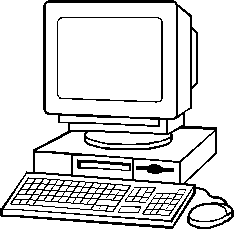 |
Computer Interest Group (CIG) News Dick Finn at rwfinn@pacbell.net |
The CIG meets once a month to hear speakers on a wide variety of genealogical computer related subjects such as software (new, revised, how to use it, etc.), hardware (computers, storage devices, scanners, cameras, printers), web sites, useful CDs, etc., that help us in our quest for genealogical information. Often we have very useful handouts and even a door prize or two. During the last couple of months we have had speakers talking about the use of digital imaging to enhance our old family pictures. We also had a meeting where we shared our experiences using computers, digital cameras, scanners, and a various software to increase our abilities in our genealogical pursuits. In the future we plan to hear from Internet providers, about use of handheld computers, and explore in more detail the use of digital imaging.
During the summer we meet the fourth Thursday of every month at 7:30 at the LDS Church, 950 Mocho Street, Livermore.
Members needing help with a computer problem may call one of the mentors listed in the Member’s handbook.
L-AGS Family Tree Maker Focus Group
The L-AGS Family Tree Maker (FTM) Focus Group meets the first Thursday of the month at 7:30 at the LDS Church, 950 Mocho Street, Livermore.
We are primarily a group of FTM users (from beginners to experts) who discuss problems and solutions, share successes, answer questions, and help each other with the Family Tree Maker software.
All person interested or potentially interested in Family Tree Maker and related software are invited to attend.
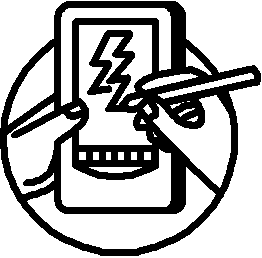 |
Thinking About A Pocket PC? By Mildred Kirkwood |
In February, I bought a Compaq Aero Model 1500 pocket PC at Circuit City for my grandson’s birthday. He goes to community college and wanted to use the PC for class, etc. We chose the Compaq because it had more memory than the Palms. In April, he lost the AC adapter for it, so I went to Circuit City to buy another adapter, only to find out that Compaq does not sell the accessories for the pocket PC in stores. They gave me an 800 number and a web site.
I ordered the adapter on the web site on April 28, and received a message by e-mail that it would be shipped no later than May 9. It cost $28 plus shipping and handling and tax, for a total of $40, which I thought, was a lot for an adapter. May 9 came and went and I still had not received an adapter. I called, only to find that the adapter was back ordered and they didn’t know when they would have it in stock. I was told that it is not their policy to notify customers of back orders.
I thought I would get a universal adapter, so I called Fry’s, went to Best Buy and Radio Shack, but they all said they did not have an adapter to fit it. The Compaq is 5 volts and I was told that most adapters come in 3, 6 and 12 volts. So, I wrote a letter of complaint to Compaq. I never got a written response to the complaint, but I did finally get an adapter on May 26. By that time, everything he had stored on the PC was gone.
My grandson likes the Compaq, and I was thinking of buying one for myself for my genealogy. After this experience, I would not buy another Compaq. If I had bought a Palm, I could go into any electronics store and buy accessories for it. Regular flashlight batteries power some pocket PCs. As someone said to me, suppose you had your genealogy on the PC and lost the adapter while on a trip. If I had one of the PCs that work on flashlight batteries, I could have bought them in any grocery, convenience, drug store, etc. Now, many of the PCs have modules that can be used to store information, which enlarges the memory and can be removed without the loss of the information. Some of them work with digital cameras and have folding keyboards. All of these accessories can be purchased in electronics stores.
Editor’s note: Check out the June 2000 issue of Consumer Reports. It has an article rating several brands and types of hand-held computers.
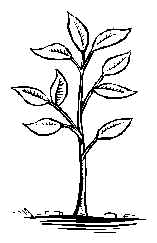 |
G. R. O. W. (Genealogy Resources On the Web – The Page That Helps Genealogy Grow!) |
Maryland State Archives contains Revolutionary War muster roles among other volumes.
<www.archivesofmaryland.net>
Photos of towns and cities and other collections can be found at The American Memory
Page "Historical Collection of the National Digital Library."
<http://memory.loc.gov>
Maps can be found at several sites.
<www.mapsonus.com>
<www.mapblast.com>
<www.mapquest.com>
A historical time line can be created and printed for your ancestor or yourself.
<www.ourtimelines.com>
The largest and most popular United Kingdom lost friends, relatives, and missing
persons web site.
<www.LookupUK.com>
1600s Ancestor Database contains colonial ancestors whose lines have been approved by
various societies and organizations.
<www.gorge.net/aff>
NVGBS Winepress,vol. 26,No.5, May 2000
U. S. Surname Distribution Maps taken from the 1850, 1880, and 1920 Census, and 1990s
telephone books.
<www.hamrick.com/names/index.html>
The Bible Archives is an on going project that consists of family bible, baptism, death
records and more submitted by volunteers from family records. (This web address is
case-sensitive.)
<www.geocities.com/Heartland/Fields/2403>
Biographical material on notable women offers both historical and genealogical
information contributed by descendants and relatives. You can also add your own
"notable women biographies."
<www.rootsweb.com/~nwa>
The Life and Times of South Dakota Pioneers, as told in their own words. This site has
letters written by pioneers and homesteaders.
<
Planning a research trip? Try these sites to learn about the locality you’re
visiting.
<www.50states.com>
<www.officialcitysites.org>
Find over 250,00 source documents and microfilm titles for purchase or rental on this
site.
<www.HeritageQuest.com>
The Ohio Historical Society has an index to the largest collection of Ohio newspapers
in existence. The 48,000 rolls of microfilm are available for interlibrary loan.
<www.ohiohistory.org/resource/database/news.html>
The Prospector, vol 2, no. 2, April 2000
Search several Internet resources at one time. This site includes white and yellow
pages, e-mail directories and trip planners.
<www.theultimates.com>
Find the history of a Civil war prison, including photos.
<http://www.angelfire.com/ga2/Andersonvilleprison/>
An index of Native American resources on the Internet with categorized links.
<www.hanksville.org/NAresources>
The Prospector, vol 2, no.2, April 2000
RootsWeb WorldConnect Project: a resource to connect family trees of everyone in the
world.
<http://worldconnect.genealogy.rootsweb.com>
 |
Past Programs By Debbie Pizzato, Program Chair |
In May, LAG-S member, Doug Mumma presented "Planning a German Genealogy Trip – Tips and Techniques." His highly informative and organized technique could be adapted to any trip with great success.
Doug provided a handout detailing the steps he took and the effort he put forth to create an organized and successful trip. He included these Internet sites as reference tools. His web site is a must see.
German Names Distribution Map
<www.germannames.com>
Diary of my trip to Germany in 1998
<www.mumma.org/Germany98+photos.htm>
Diary of our trip to England in 1998
<www.mumma.org/England98.htm>
"The German Research Companion" by Shirley J. Riemer
<www.softcom.net/users/lorelei/index.html>
German Handshake Packet, for members of Sacramento German Genealogy Society
<http://feefhs.org/sggs/frg-sggs.html>
In June, Pat Isom, Director of the Family History Center at the LDS Church in Alamo and a San Ramon Valley Genealogical Society member presented "Land Records in Genealogical Research." Pat has spent a great deal of time researching land and property records and it shows in her presentation. Pat pointed out that land records are important because:
Pat’s handout also covered: Terms to Know When Using Land Records; Land Process and Transfer; Organization of State and Federal Land; What You Can Find in Land Records; and Where You Can Find Land Records. She recommended The Bureau of Land Management web site: <www.glorecords.blm.gov>
Pat provided the following tips when doing land research:
 |
Genealogy Puzzles? (Or Always Keep an Open Mind!) By Jon Bryan |
Mary Dillon borrowed a tombstone from Barbara Bunshah of the Livermore Heritage Guild for our booth at the Alameda County Fair 2000. Barbara also provided obituaries from two local newspapers. It turned out to be an example with puzzles that we genealogists sometimes encounter during our searches. How many puzzles (or discrepancies) can you spot from the information on the tombstone plus these two obituaries shown below?
The tombstone read simply:
Antoine Rufet 1853 - 1914
The Livermore Herald (August 15, 1914) read:
"Antone Ruffet Found Dead at Scofield Vineyard
Antone Ruffet, who lived alone on the Scofield vineyard two miles south of town, was
found dead in bed Sunday. Deputy Coroner, J. C. Reimers went out and took charge of the
remains.
The condition of the body indicated that death came about the preceding Wednesday. There
was nothing about the body to indicate that death came by any violent means and a
subsequent autopsy revealed the fact that a ruptured gall bladder was the direct cause of
death.
The funeral was held Monday afternoon from Graham & Reimers’ undertaking parlors.
Deceased was a native of France, aged 60 years. He was unmarried and his only relative in
this country was a brother, Frank Ruffet, of Byron. Deceased had been a resident of this
valley about seventeen years."
The Livermore Echo (August 13, 1914) read:
"Found Dead in Bed
Antone Rufet was found dead on his bed at his place two miles southwest of town - the old Scoville place - last Sunday at 4 p.m. by his next-door neighbor, Ferdinand Hilke. Deceased was a native of France, aged 61 years. He had evidently been dead several days, as the body was in an advanced state of decomposition, and at the coroner’s inquest Monday two countrymen neighbors of the deceased testified that on the previous Friday afternoon they had looked in at his window and seen him lying on the bed apparently asleep and in the position in which he was later found. The cause of death was found to be cirrhosis of the liver, fatty degeneration of the heart and other disorders. His only relative is a brother, John Rufet, of Byron."
I see these puzzles (or discrepancies). You probably will spot more!
We won’t count this one, but on what day did he actually die? The Herald says he died about Wednesday, while the Echo indicates that when his body was found on Sunday [August 9, 1914, according to my calendar], he had been dead several days. Could this coroner’s inquest be off by as much as a day or more?
It is also interesting that the Herald appears to report a "more politically correct" cause of death - a ruptured gall bladder, while the Echo says cirrhosis of the liver. Were these two different persons? Would a copy of the death certificate help us?
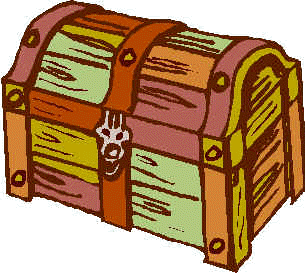 |
From the Attic |
| Debbie Mascot: My Genealogical Treasure is a photo of five generations of my family: My grandfather is standing in the back, with his dad (my great grandfather) sitting in front of him. HIS father (my great, great grandfather) is holding me (I'm the little one!) and my dad is on the other side. When I think of family, I think of this and when I think of genealogy, I think of this. Everyone in the picture has meaning and purpose in my life and by researching the history of the genes that bind us together, I hope to bring some meaning to the lives that came before us. |
|
Mildred Kirkwood:
I have a very special pair of spurs. My uncle, Jesse Johnson, was a cowboy on a ranch in Nevada. He died of pneumonia, at the age of 34, after hunting stray cows in a snowstorm in 1937. All of his belongings were shipped to his mother in Oregon.
When I was young, I remember my grandmother taking me into the attic of her house and showing me Jesse’s things. There was a saddle, and a satchel containing his gun and holster, spurs and a rodeo shirt. By the time they were passed down to me, there was only the satchel with the spurs and rodeo shirt. My mother and grandmother also kept Jesse’s letters, which give a real flavor of his character.
Last year, I got to wondering about the spurs after reading an article in the paper about old spurs. I took them to Butterfield and Butterfield in San Francisco for an appraisal. The appraiser told me that they were made about 1900 by G. S. Garcia, the foremost maker of spurs in America at that time. They have large rowels, and tooled leather straps. The part of the spur that goes around the ankle has a design of two hearts in silver. The appraiser said they were worth between $2,000 and $3,000. Later, they asked me to present the spurs on the Home and Garden channel appraisal show, where they said the spurs were worth $5,000 to $7,000. I again asked the appraisers for the value and they again said $2,000 to $3,000. So much for the value we see given to things on the TV antique shows! With the conditions of sale that Butterfield imposes, I would have been lucky to get $400 to $500 out of them if I had sold them! However, I have a grandson named Jesse and I intend to keep the spurs for him.
| Vicki Renz: Here is my grandfather (my mother’s father) in 1919 when he was 26 years old. He was a 2nd lieutenant in the Mounted 185th Cavalry in Germany at the time of this photo. Isn’t he dashing in his uniform? No wonder my grandmother fell in love with him! I have four little diaries he wrote about his time in the Army from the fall of 1918 through 1919. I have started to transcribe them so my brothers and cousins can read them, too. |
 |
Things to File |
L-AGS Future Programs
August 8, 2000 – Carol Glover, a San Ramon Valley Genealogical Society member, will speak on Newspaper Research.
September 12, 2000 – David Abrahams, Livermore-Amador Genealogical Society member, will speak on 20th Century Immigration.
October 10, 2000 – Kenneth Felton, a Hayward Area Genealogical Society member, will speak on U.S. Passport Applications.
1790 – 1920 Census
From Generations Heritage Quest Newsletter, July 18, 2000.
SierraHome’s "Generations" and Heritage Quest are thrilled to announce
a life’s work coming to fruition. In fall 2000, we will be launching
GenealogyDatabase.com, featuring the exclusive online publication of the complete U.S.
Federal Census Schedules. This extraordinary site will host the massive 3.5 terabytes
required to house every available census schedule. That’s 3,500 gigabytes or an
estimated one-quarter of the entire World Wide Web!
GenealogyDatabase.com will also feature Heritage Quest’s precision census indexes, known for their superb accuracy and superior data quality. The site’s goal: Ten terabytes of data in the near future. No doubt, this will include numerous genealogy-rich titles from Heritage Quest’s archives.
GenealogyDatabase.com will also be a uniquely dynamic center for community research. A "sticky note" feature will allow users to post additional information with each record, including items such as research notes, known errors in the record or requests for photos.
Subscription information will be announced as details become available, so be sure to sign up for the GenealogyDatabase.com update. <http://tako.sierra.com/gendb/signup.htmlw>
For more details, visit <http://www.genealogydatabase.com> You will be able to see examples of the original census images; learn how the images are made; and see frequently asked questions about this database.
Birthplace Survey at Alameda County Fair 2000
By Jon Bryan
Our Livermore-Amador Genealogical Society included a survey of birthplaces of visitors at Alameda County Fair 2000 at the genealogy booth we had set up in the Small Animals area. The Fair ran for 17 days and L-AGS supplied volunteers on six. Pushpins were placed at birthplaces on United States and World maps.
For the U.S., 45 states plus Washington, D.C. were represented. As expected, California was first with 74 pushpins. New York placed second with 18 pushpins, followed by Oregon with 12. Michigan had 9; Ohio, and Oklahoma, 8; Washington, Illinois, Texas and New Mexico, 7; Massachusetts and Minnesota, 6; North Carolina, Wisconsin and Iowa, 5; Pennsylvania, Missouri and Hawaii, 4; Connecticut, Maryland, Virginia, Georgia, Florida, Tennessee, Indiana, South Dakota, Kansas, Montana and Nevada, 3; New Jersey, Louisiana, Kentucky, Alaska, North Dakota, Colorado and Utah, 2; Maine, New Hampshire, Rhode Island, Delaware, West Virginia, Mississippi, Nebraska, Arkansas and Arizona, 1.
We had birth representatives from over 30 foreign countries, including some from Central America, South America, Europe, the Middle East, Asia, Southeast Asia, Africa and Australia.
Maybe we can get an even bigger survey sample next year. How many pushpins did we have in our maps? The answer is slightly over 300, almost the same number as entered our contest drawing! However, some persons who entered our contest did not place pushpins and vice versa. I did notice a time or two when a pushpin came out when I was trying to put another one in. Some persons would say they were born in the Bay Area, but we already had it saturated with pushpins so no more pins were placed. We hope to eliminate this difficulty next year with additional maps of California and Alameda County. Our birthplace survey statistics were not perfect, but it certainly was enjoyable!
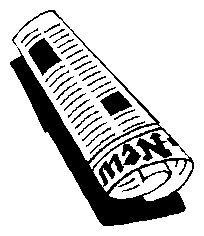 |
News Article |
From George Anderson e-mail to members.
A recent issue of "Pleasanton Weekly" had a nice article about the
Pleasanton Library. It was based on a report by the library commission to the city
council. Sandie Dibiase, one of the commissioners, was quoted as saying, among other
things, that the library’s genealogy collection is the best in the Bay Area. Sandie
called me later to say that that is not what she said in the meeting. She correctly said
that the CD collection is the best in the Bay Area, but the paper misquoted her.
Also in the same paper, L-AGS member Frank Geasa was one of the "man on the street" interviewees. The question was, "Do you plan to attend the fair, and if so, what will you go to see?" His answer: Frank Geasa, retired software programmer: "I’ll definitely be attending. I am a volunteer at the genealogy booth at the fair open on Thursdays and Saturdays. This is the Livermore-Amador Genealogy Society’s first year there. I also like the gardens and the art exhibit and will go and see those."
Incidentally, in the interview before Frank’s, the man said he wasn’t going to the fair because "I don’t think it is very interesting"!
Donations to L-AGS |
Other members have wished to make a monetary donation on behalf of a loved one or friend. These donations will be used according to the donor’s wishes, or if none is expressed, we will purchase items for our Pleasanton and Family History Libraries.
We welcome such donations and our Corresponding Secretary will acknowledge the gift. If a memorial, an acknowledgment will be sent to the family.
Last Modified 8 April 2004 vlr, 10may04.0547 gwa